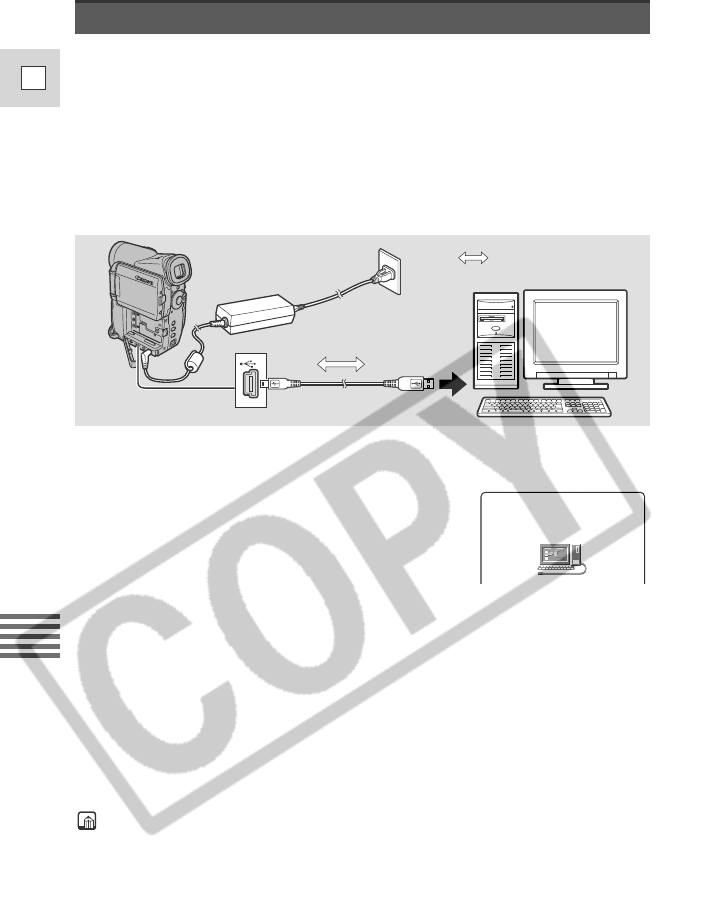
140
E
Using a Memory Card
For instructions on how to connect the camcorder to the computer, and
install and operate the software, refer to the DIGITAL VIDEO SOLUTION
DISK Software Instruction Manual.
• Refer also to the computer instruction manual.
• “PC CONNECT” appears to indicate that the
camcorder is connected to the computer via USB
cable.
Cautions:
• Do not disconnect the USB cable, remove the memory card, change the
position of the POWER switch or turn off the camcorder and computer while
data is being transferred to the computer (while the camcorder’s card access
indicator is flashing). Doing so may damage the memory card’s data.
• Operation may not work correctly depending on the software and the
specifications/settings of your computer.
• The image file on your memory card and the image files saved on the hard disk
drive of your computer are valuable, original data files. If you wish to use
image files on your computer, make copies of them first, and use the copied
file, retaining the original.
Notes:
• We recommend powering the camcorder from a household power source while it
is connected to the computer.
• For transferring recordings from to a computer using a DV cable, see p. 100.
• Still images/movies recorded on a tape cannot be transferred to a computer via
USB interface.
Connecting to a Computer Using a USB Cable
You can download images from the memory card to a computer using the
supplied USB cable. With the supplied software, you can easily download,
browse and archive images, and arrange still images for printout.
For Windows XP and Mac OS X users:
Your camcorder is equipped with the standard Picture Transfer Protocol (PTP).
This protocol enables you to download images by simply connecting the
camcorder to a computer with the USB cable (a software such as the [Scanner and
Camera Wizard] starts automatically) without installing the software from the
DIGITAL VIDEO SOLUTION DISK.
IFC-300PCU USB cable
: Signal flow
PC CONNECT
[
USB
]


















